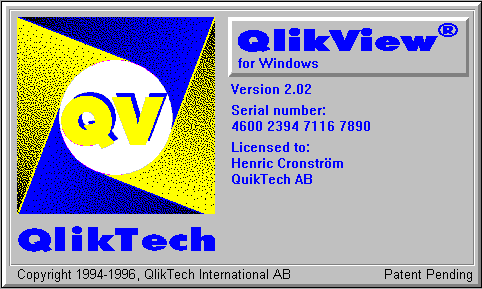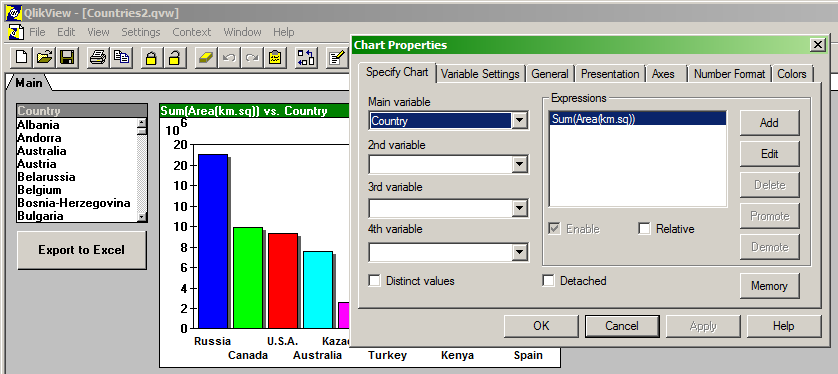Unlock a world of possibilities! Login now and discover the exclusive benefits awaiting you.
- Qlik Community
- :
- Discover
- :
- Blogs
- :
- Product
- :
- Design
- :
- A Historical Odyssey: QlikView 2
- Subscribe to RSS Feed
- Mark as New
- Mark as Read
- Bookmark
- Subscribe
- Printer Friendly Page
- Report Inappropriate Content
Software development is a learning process. In the development you sometimes reach a point when you realize how you should have done it in the first place and as a consequence you want to re-write all or parts of the code from scratch.
In 1996, when starting the development for QlikView 2, we were in such a situation. We had learned a lot from coding 32-bit Windows code (which was still fairly new) and we had seen that the older Single Document Instance (SDI) paradigm was not what we wanted to have in the future: SDI programs could only hold one document open at a time. We wanted the Multiple Document Instance (MDI) paradigm instead.
To make a long story short: We re-wrote large parts of the code and as a consequence, we had problems with the product stability. We had to postpone many of the planned features and spend time bug fixing instead.

The features included in version 2.0 were hence few, the major ones being MDI interface, the introduction of the button object and the possibility to have several dimensions and several expressions in charts. With the button object you could e.g. export data to Excel.
And, yes, we discontinued the 16-bit version of QlikView. We saw that the future lay in 32-bit code. Also, and more specifically for QlikView, we saw that memory was getting cheaper and started realizing that it was possible to perform analysis down to the transactional level even for fairly large data sets – but for this we needed 32-bit code to be able to load the larger amounts of data.
After the release of version 2.0, we started working on the postponed features – and they were many! When we got closer to the release of 2.1, we noted that the new version would have little in common with the 2.0 version. So someone (from marketing) suggested we’d number the new version “2.5” instead.

Here you must understand that the QlikTech company culture contains a large element of frankness. If you don’t agree, you speak up; you say your meaning. So at the suggested jump from 2.0 to 2.5, there were people – techies including myself – that expressed their dissatisfaction over the inconsistent version numbering. An animated argument followed where no side got the upper hand. The people in favor of jumping to 2.5 were just as stubborn as we.
In these early days, such decisions were always made in consensus. But now we were in a deadlock. The compromise was to release neither a version 2.1 nor a version 2.5. Instead we labeled the new version “3.0”, which in retrospect was a good decision. But more about that in a later blog.
Bottom line is, that QlikView 2 had a very short lifetime and did not have a big impact at all. But it did pave the road for versions to come: We had re-written the code and the new 32-bit architecture was sound and allowed to be built further upon.
Further reading on Qlik history:
You must be a registered user to add a comment. If you've already registered, sign in. Otherwise, register and sign in.